
We’re here at the Moscone Center in San Francisco for Google I/O, where the Mountain View-based search giant is covering a broad range of topics – from Android to App Engine, OpenSocial to Web Toolkit – in front of an audience of developers.
VP of engineering Vic Gundotra is kicking things off with a keynote, which will be streamed and live blogged below. Also see our gallery of photos, and a video from AndroidCommunity, below from an impressive Android demonstration given during the keynote.
See our expectations for the event here.
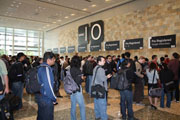 |
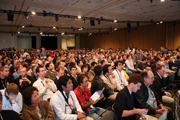 |
 |
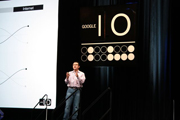 |
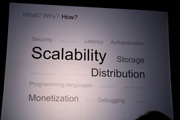 |
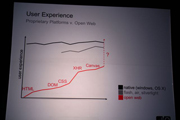 |
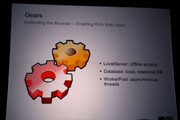 |
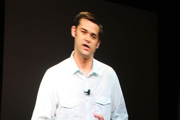 |
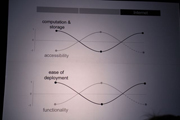 |
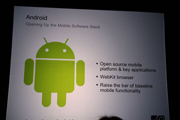 |
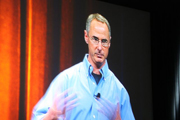 |
 |
 |
 |
 |
 |
 |
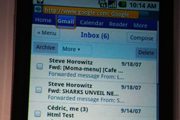 |
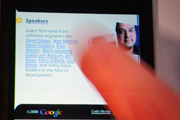 |
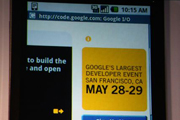 |
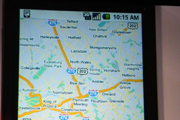 |
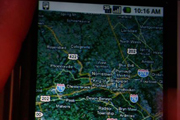 |
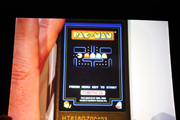 |
 |
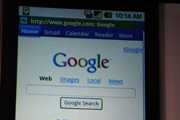 |
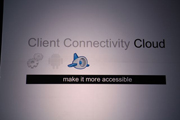 |
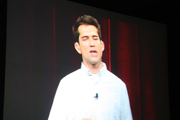 |
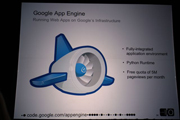 |
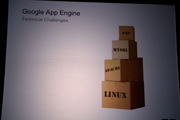 |
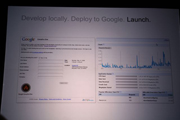 |
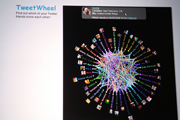 |
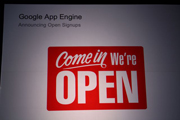 |
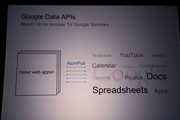 |
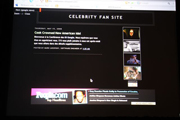 |
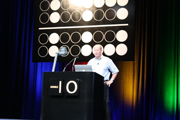 |
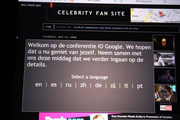 |
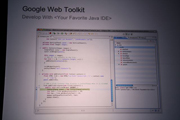 |
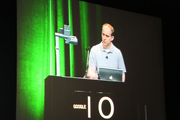 |
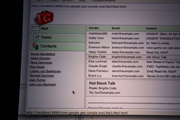 |
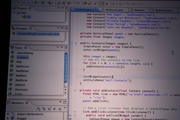 |
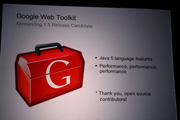 |
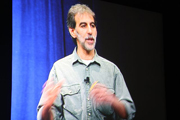 |
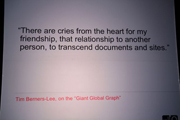 |
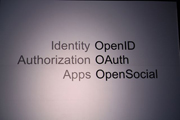 |
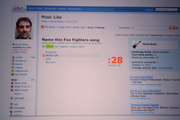 |
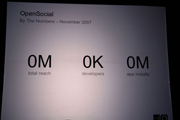 |
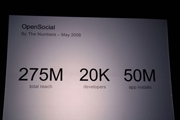 |
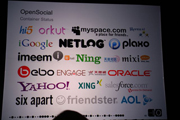 |
Vic Guntodra, VP Engineering, Keynote Notes
Main theme for the conference: making the cloud more accessible
Google was born in the era of the web; only platform our company has ever known
world of consensus and partnership
We owe a debt of gratitude to the web and open source technologies
“standing upon the shoulders of open source work”
Committed to working with the open source community and giving back
We are probably the company most incentivized to move the internet forward because it indirectly drives search traffic, generates revenue for Google
Google wants to make the web client (browser) more powerful
Gmail in 2004 started to demonstrate how Ajax could enable powerful apps in the browser
It’s unacceptable that it takes so long to innovate in the browser; believe in time the experience will get richer and richer
Google Gears (now simply called “Gears” — a reflection of Google’s move away from branding these initiatives, as with Open Social, which it insists is a community-led project) is an exciting way to extend the browser. We’re not only excited about the adoption of Gears, but happy with how HTML 5 incorporates offline functionality. We believe HTML 5 is the future direction. “Deep support and commitment for HTML 5”
Bringing Allen Hurff, Engineering SVP for MySpace, onto stage to talk about MySpace’s work with Gears.
Hurff: asynchronous threads, full text ability, SQL database on local machine — all important for developers; will provide live demo of MySpace’s implementation.
Now a search box and sorting for MySpace messaging. Functionality was easy to develop; it’s the power of Gears that makes this possible. You can always turn off Gears and get the message data off your machine.
Vic back on stage; mentions how Gears takes advantage of end user’s computational power.
Turning attention to mobile applications. They’re not fun to develop; have to support so many platforms. RIM, BlackBerry, iPhone, Java clients, Samsung, etc — 14 platforms if you’re serious about developing for mobile; very fragmented.
Not every team has the resources Google does to build for every platform. Google is betting on browser over time for mobile devices; it will be the entry point for many applications.
But today, the only browsers capable for supporting mobile apps include iPhone and few others. So Google is developing Android, which includes world class Webkit browser.
Steve Horowitz, Engineering Director for Android, brought on stage to talk about Android and where it’s at.
Horowitz: Demoing a device with Android; showing unlocking, standard home screen. Has the same layout as iPhone (prominent icons in grid) and touch screen capabilities. Actually looks pretty stunning and competitive with the current iPhone.
Phone can track live movements, pan around Street View by just moving phone.
Vic invites Kevin Gibbs, Tech Lead Google App Engine, to talk about Google’s cloud services. Hard to get web services off the ground as things stand. Want to make it easy to build and scale apps — and for free to start.
App Engine’s three design goals: easy to start, easy to scale, free to get started. What can you build on App Engine? Two examples: TweetWheel and LaterLoop, a “read webpages later” app. Both hosted and built on App Engine.
Going into the new App Engine APIs that were announced yesterday: Memcache and Image Manipulation. Memcache is important for scaling. Image Manipulation allows you to, well, manipulate images inside App Engine, and do so efficiently. Announced the pricing, as well. Billing is not done yet, but will be done by the end of the year. And finally, Gibbs announces that App Engine is open. Applause from the audience.
Mark Lucovksy, Technical Director is up on stage, here to talk about Google Data APIs (Gdata). They offer read / write APIs to Google Services, like Calendar, Docs, YouTube, etc. Now talking about the AJAX APIs, which offer similar services, but more about embedding Google services via a read-only REST API. They call it “sprinkle the web onto your applications.” Think embedding Google Maps on your site. Here comes a demo.
Lucovsky is showing off a simple celebrity fan site hosted on Blogger. It’s about how to have searchable YouTube videos on your site. Some javascript in the header that brings a video strip on the right-hand side of the screen, plus a Google search bar at the bottom of the page. All the calls are AJAX and you can even contain links in the page which modify the videos in the right-hand strip without any reloading. These Google AJAX APIs are pretty impressive in terms of flexibility and features. His last one, the Google Translate API, is particularly powerful for your blog.
At 10:41 AM, Vic takes back the stage, and promptly introduces Bruce Johnson, Engineering Manager for Google Web Toolkit (GWT). Google Web Toolkit is targeted for “highly ambitious” AJAX applications. He says, the truth is that the browsers are capable of highly interactive AJAX apps, you just can’t spend all your time fighting browser quirks. Toolkit also allows you to write javascript code in the regular Java language and use your favorite Java tools (ie IDEs).
GWT does this: it takes java source, “optimally” cross-compiles it, and produces compiled javascript. I believe him; this is probably way easier. And the idea is that they do all the hard work with GWT in terms of optimization and provides tools to make it possible. Demo’ing the JAVA -> GWT -> JAVASCRIPT process. Using the Eclipse IDE. Bruce says you get to use Object Oriented Programming, “which some have found useful in the past.” Allows programmers to set “breakpoints” in the code (places where the code deliberately stops for debugging purposes). Also shows Lombardi Blueprint, a GWT site with some impressive graphics where data is all loading via AJAX.
Lastly, Bruce announces two things: one, the GWT 1.5 release, and two, which he says is their most requested feature: Java 5 support. Google Web Toolkit is open-source as well. Supports new languages (right-to-left ones, among them). Longest guest speaker of the presentation.
Vic comes back to joke that Bruce is “Bringing Java Back” a la Justin Timberlake (“Bringing Sexy Back”) — Vic says “you gotta take a chance” when the joke drops dead.
Moving to the OpenSocial section of the keynote, Vic brings up David Glazer, Engineering Director.
“Surf Report on the Social Web: Surfs Up” is the title of his talk. Two things are coming together: social (people care about people and want to connect) and “the web is a pretty good idea. It’s the notion that taking a few good standards… and allow things to connect… you get the web.”
David talks about three standards: OpenID, OAuth, and OpenSocial, which provide Identity, Authorization, and Apps, respectively. OpenID is growing, he says. Authorization is an important problem, needs to work, be secure, and not be too laborious. Finally, you have to use identity and the data these identities want to expose, and then do stuff with it: that’s the idea behind OpenSocial. OpenSocial is a set (or family) of APIs. It’s a reference implementation, and it’s a community of developers, containers, and apps. Lots of OpenSocial sessions here at Google IO.
“Well it wouldn’t be a Developer event if there wasn’t a long-haired developer from Seattle” — Nat Brown, CTO of iLike comes on stage.
iLike is a social network that focuses on music (recommendations, playlists, quizzes, etc). Showing OpenSocial integration with an early-adopter, Hi5. Showing iLike embeddable data in Hi5 — can do things like recommend songs to friends within Hi5 from the iLike Hi5 app. Nat dedicates “Fix You” by Coldplay to one of his friends. Then he shows off the same inside Orkut.
Lastly, showing Ingrid Michaelson’s artist website, where iLike syndicated her songs and put their app into her website. IngridMichaelson.com is one of the first users of Google Friend Connect. Not much more mentioned about Friend Connect, staying pretty mum on the whole thing – surprising given its dedication of a whole Campfire One to the initiative.
“Laziness is a wonderful thing.” That’s the promise of OpenSocial, says Glazer.
How are the numbers working out? 275M total reach. 20K developers. 50M app installs. The “containers” list — ie the adopters of OpenSocial. Netlog and Tianya is new, both international social networks.
AOL joins OpenSocial today. Their suite of products will support the standard — no other details yet, although we expect an official press announcement on AOL’s part later in the day.
What’s next for OpenSocial: RESTful API (0.8) and be able to use a markup language to describe the apps declaratively.
Google Friend Connect builds on all three of the aforementioned services; uses OpenID, OAuth, and OpenSocial. Doesn’t go into it much.
Vic back on for seemingly the final words of the keynote. Reaffirms the focus of a Open Web Platform and Google’s part in it.
11:15 pm PT: Keynote over now. Sessions are starting on Floor 2.
Post-Keynote Press Conference
Google is answering some Q&A from the press at a meeting following the keynote. Representatives from Google include:
- Vic Gundotra – Developer Programs
- Tom Stocky – Google App Engine team
- Allen Hurff – MySpace and Gears
- Sundar Pichai – Gears team
- Andy Rubin – Android team
- Peter Birch – Google Earth team
- Bruce Johnson – Google Web Toolkit team
- David Glazer – OpenSocial team
Our notes follow:
When asked about how Vic measures the success of initiatives, he says that it’s different for Google than other companies because Google is not promoting its own platform. He says he measures success by the number and quality of applications that 3rd party developers and Google itself develop.
We are not announcing any network investments today, but deeply invested in open networks going forward. Increasing, pervasive bandwidth with consumer freedom of choice
“Definitely going to be launching” other languages for App Engine, since infrastructure is language neutral.
When we announced Android with 34 partners, we said handsets would be available in second half of this year. “We want to make sure it’s perfect” Not being any more specific about when it’ll be available.
Android built generically to work with a lot of different types of devices. We just happened to show demo with touch-screen, could have shown one with track ball instead.
The specific OEM who made hardware for Android demo can’t be disclosed. Andy Rubin provides some other details about the device, such as how much memory it had.
Mobile World Congress in March was the last real time Android was demoed in public, today shows the most recent advances.
App Engine pricing announced today is the expected pricing to be used later this year.
Vic doesn’t think there’s any question that, in terms of the platform, the web has won.
When asked about Facebook not joining Open Social yet, Vic says Google is eager to work with entire industry, no one excluded.
Goal is for people to deploy Open Social apps without talking with Google – “the power of an open standard”, don’t need business relationship to deploy on technology
Rubin says interest in Android has been global.
Google says it doesn’t have a particular expectation for how many developers will actually pay for App Engine.
When asked about concerns about data privacy and security, Vic says its Google mission to earn consumers’ trust; says security standards need to be hardened. Says benefits of having data in cloud will eventually tip the balance in favor of hosted software.
Vic says Google thinks industry at large has converged on WebKit, expects to see major fresh from Nokia on that front. On desktop side, Sundar Pichai says Google focuses on helping evolve HTML 5.
Vic: old way of looking at this was “browser wars”, now consumers are just benefitting from advancements in browsers.
In terms of implementing OpenID, David Glazer won’t give any specifics. But he mentions that Blogger is already a provider – this is one of Google’s first steps into OpenID.
When asked about Android multi-touch, Andy Rubin says software doesn’t really need to do much to support it — developers just need to write the right drivers to make it happen (Android demonstration during keynote was single-touch).
Vic: Amazon opening up their web services was a milestone. App Engine is a slightly different approach – not the “a la carte” approach, but a simpler, more holistic one. But the two are not mutually exclusive; you can use both in conjunction. “They are not as competitive as some would like to make them. We are excited to see developers use Amazon or App Engine, just want to see developers make great apps.”
Discussion with David Glazer, Director of Engineering for Google
Following the press conference, Steve Gillmor captured the following video of David Glazer, who touches on a number of topics related to cloud computing.